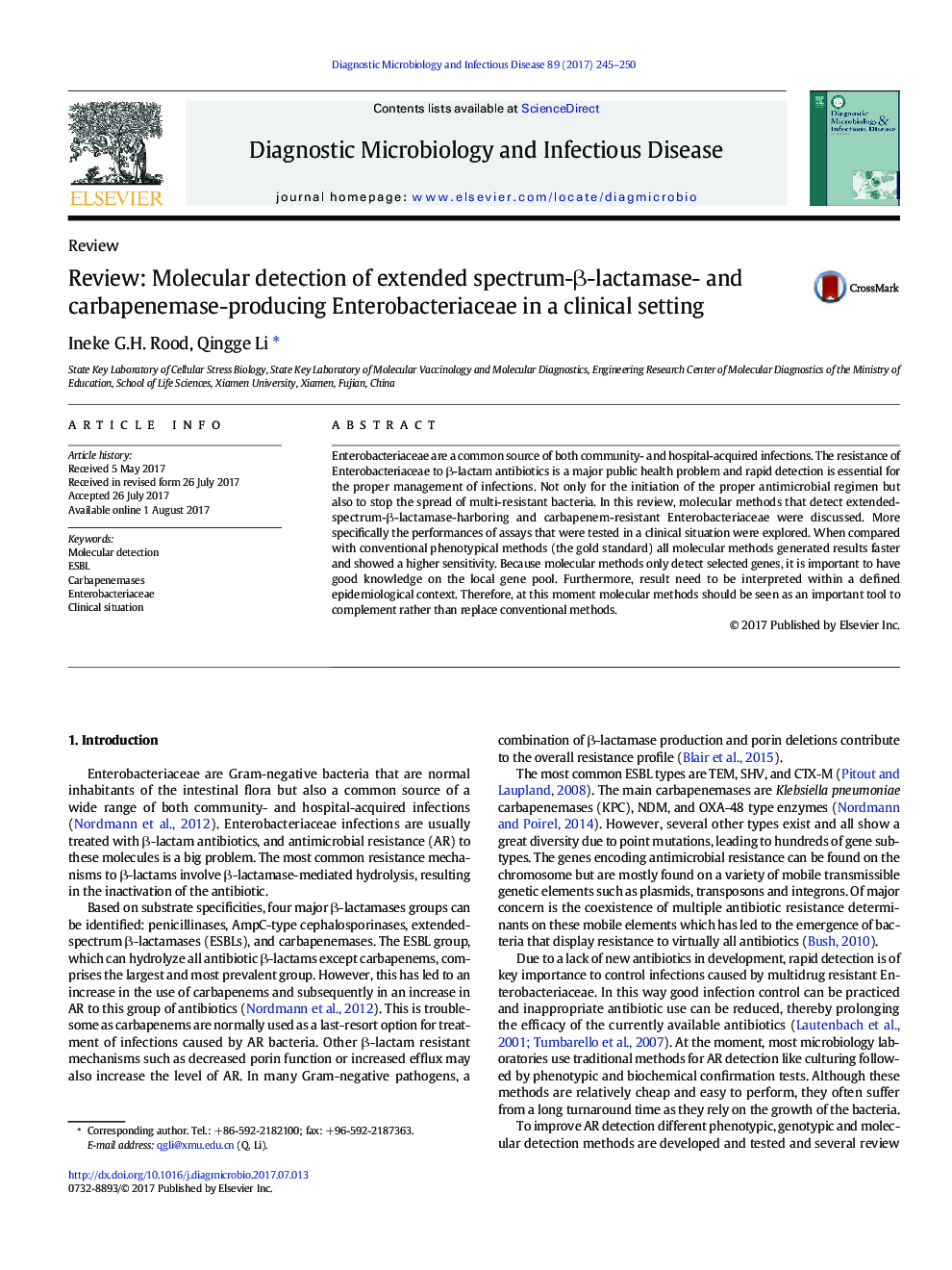| Article ID | Journal | Published Year | Pages | File Type |
|---|---|---|---|---|
| 5665816 | Diagnostic Microbiology and Infectious Disease | 2017 | 6 Pages |
â¢Î²-Lactamases in Enterobacteriaceae infections are a major public health threat.â¢Molecular methods detect antibiotic resistance fast and with great sensitivity.â¢However, before implementation knowledge on the local gene pool is essential.â¢Also, results need to be interpreted within a defined epidemiological context.â¢Molecular methods can be an important tool to complement conventional methods.
Enterobacteriaceae are a common source of both community- and hospital-acquired infections. The resistance of Enterobacteriaceae to β-lactam antibiotics is a major public health problem and rapid detection is essential for the proper management of infections. Not only for the initiation of the proper antimicrobial regimen but also to stop the spread of multi-resistant bacteria. In this review, molecular methods that detect extended-spectrum-β-lactamase-harboring and carbapenem-resistant Enterobacteriaceae were discussed. More specifically the performances of assays that were tested in a clinical situation were explored. When compared with conventional phenotypical methods (the gold standard) all molecular methods generated results faster and showed a higher sensitivity. Because molecular methods only detect selected genes, it is important to have good knowledge on the local gene pool. Furthermore, result need to be interpreted within a defined epidemiological context. Therefore, at this moment molecular methods should be seen as an important tool to complement rather than replace conventional methods.
